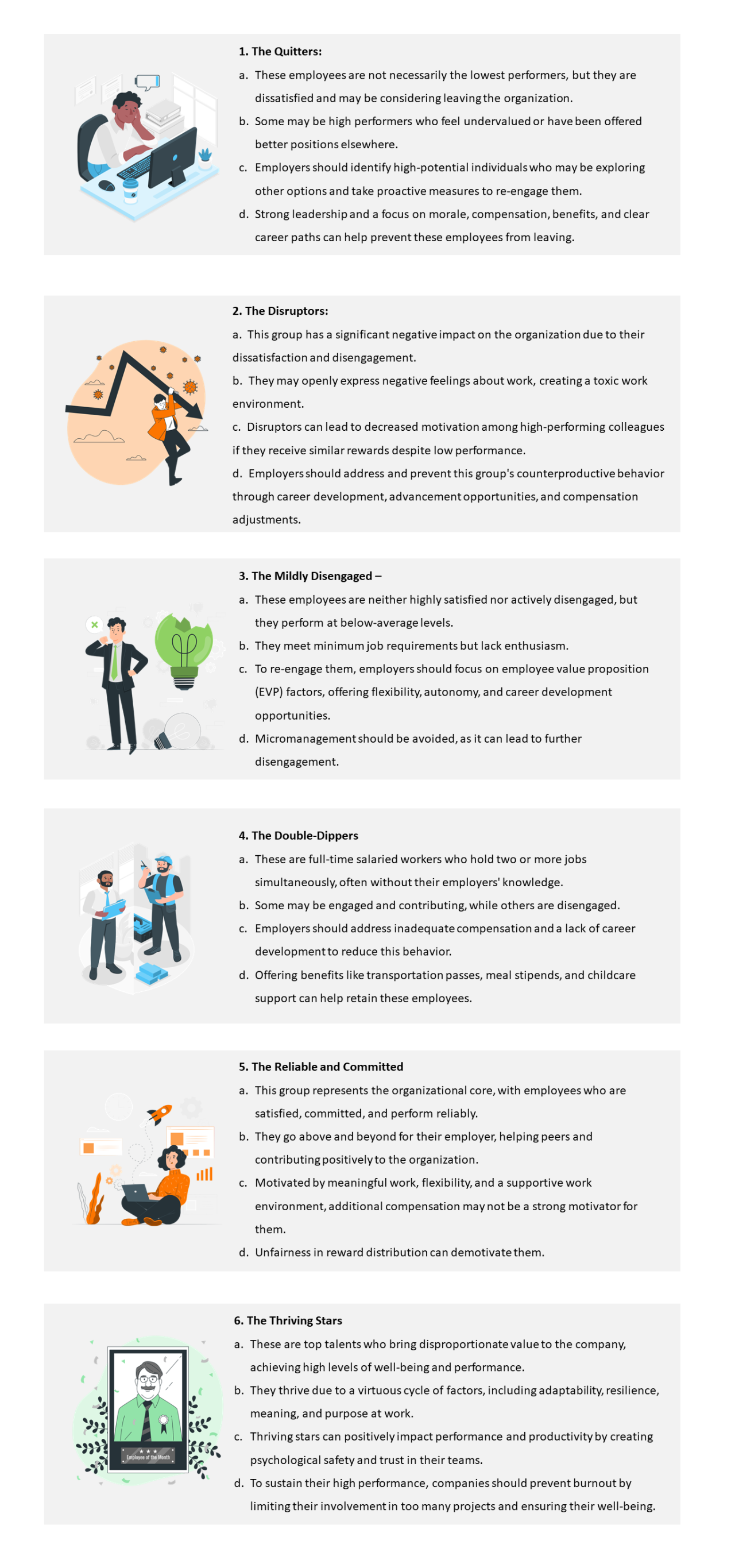Chart of The Week: Are Your Employees Creating Value for Your Company, Or Destroying It?
The COVID-19 pandemic has reshaped the way people work, leading to increased remote and hybrid work models. Companies are grappling with how to measure employee effectiveness as labor costs rise and productivity declines. Research by McKinsey reveals that employee disengagement and attrition could cost a median-size S&P 500 company between $228 million and $355 million annually, totaling over $1.1 billion in five years.
McKinsey identifies six distinct employee groups, ranging from highly dissatisfied and disengaged to "thriving stars." These groups have varying levels of satisfaction, engagement, performance, and well-being. The goal is to move as many employees as possible away from the highly dissatisfied group and towards greater engagement and commitment. The six archetypes are as follows:

These archetypes provide a framework for understanding and managing employee engagement and satisfaction. By tailoring strategies to each group's specific needs and motivations, supervisors can work towards improving overall performance and reducing attrition.
The study also highlights the importance of the working model – in-person, remote, and hybrid – and how these different working models impact employee satisfaction, commitment, well-being, and self-reported performance. It found that different employee archetypes may have varying preferences for these working models. For example, thriving stars prefer remote and hybrid work. To address these challenges, companies should focus on keeping thriving stars engaged while creating similar conditions for other employee groups. This approach can lead to reduced costs, increased productivity, and a more resilient workforce.
